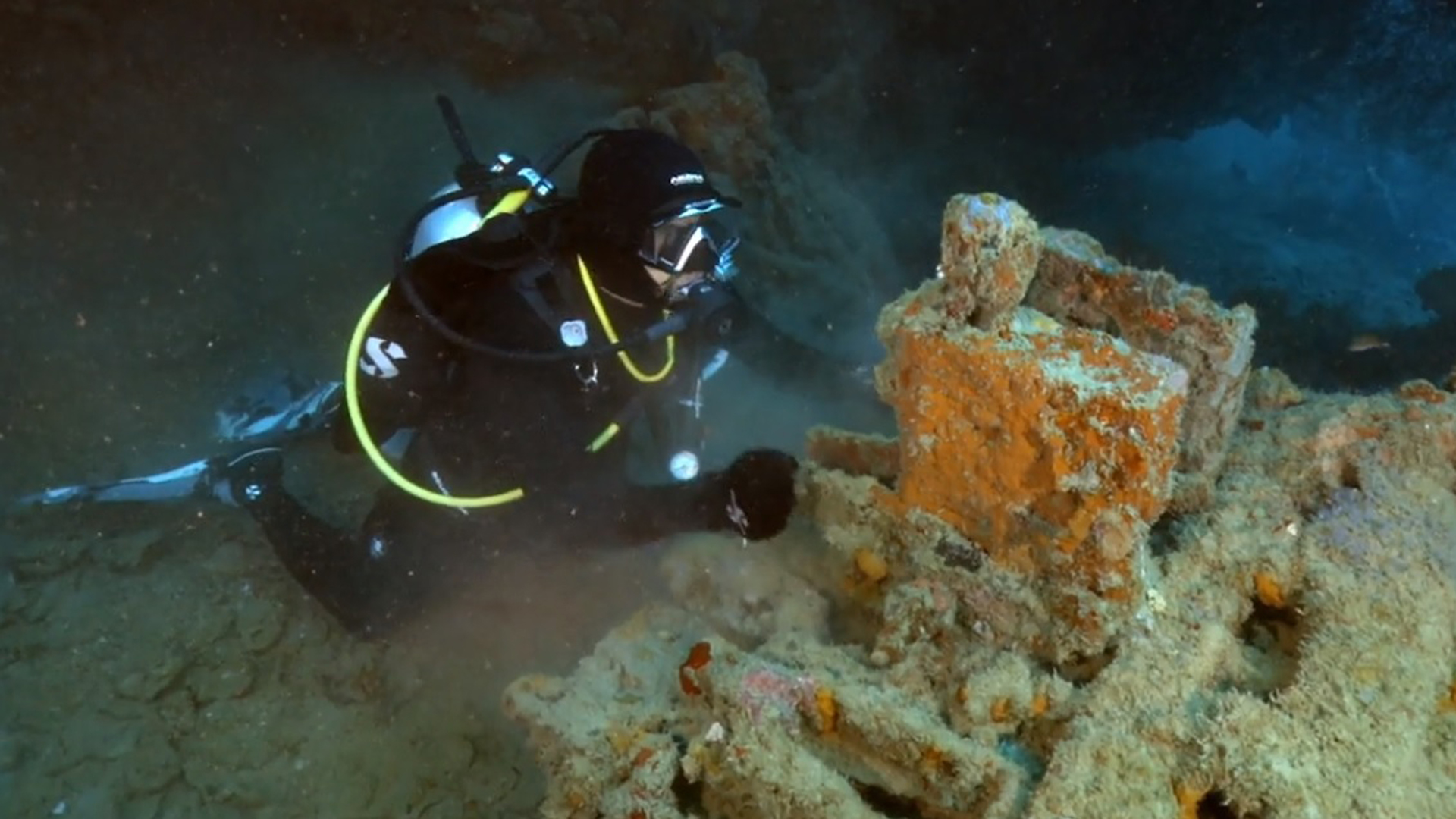The lockdown may have stopped us from going out, but not from daydreaming our own adventures. Get your shot of adrenaline this summer and dive into breathtaking sceneries and uncover some of the most interesting yet underrated mysteries of Philippine history in underwater wrecks found all over the country—while you’re still at the safety of your own homes.
There’s no need to spend cash or leave the couch as iWant brings exciting exploits to your screens in its original underwater docu series “Wreck Hunters” for free. Tag along with divemaster and award-winning underwater photographer Wowie Wong and sports and outdoor enthusiast Ernie Lopez as they take you to dangerous yet seemingly magical wrecks in the five-episode series, which surveys a sunken casino, an aircraft carrier, a Japanese cargo ship, and more.
Not yet convinced? Here are some reasons to watch iWant’s “Wreck Hunters” and try wreck diving in the future:
1. Wreck diving is like taking a history lesson underwater

A wreck doesn’t only carry its material history, but also the context in which they happened – economically, culturally, and socially. The Dari-Laut wreck in episode one, for instance, used to be a ship that was used as a drug den from Singapore. And when their operations were busted, the ship was then hauled by Filipinos to become a floating hostel in Anilao. When it sank, its debris became the foundation of its surrounding town’s chapel. The locals, who were former employees of the floating hostel, still remember their paradisiac time onboard.
2. Wrecks provide habitat for marine life

While they seem tragic or eerie to some, wrecks become artificial reefs that provide a home to different marine species. The Akitsushima wreck in Palawan used to be part of the Japanese imperial army, but was sunken by the Americans airstrike in 1944. Its massive mast for the radio antenna is now thickly encrusted with beautiful, colorful corals. The stunning view of the confetti of shimmering fish are also a delightful part of every dive.
“It’s very interesting that ships of war which were designed for destruction and chaos. Underwater, they are wrecks, and now they’re giving life not just to corals but fish. Because of that the ship becomes a sanctuary and the aquatic community thrives… So something that was designed to give death is now giving life. And I love the metaphor. That’s how we should be,” shared host Ernie.
3. Wrecks are like underwater museums—they contain historical artefacts and memorabilia

Amid the schools of glass fish everywhere, the Akitsushima dive also features some interesting structures such as a turned over car, a kitchen stove, cups and bowls of soldiers, and even a pushcart for coffee. Other featured wrecks also have staircases, air bubbles, and impressive guns and rifles that are still intact. From his dives, Brian Homan, an Austrialian wreck diver residing in Subic, has already amassed a collection of artefacts worthy of a museum. Some of his most precious are ten-century old Spanish coins, a gold coin that he wears around his neck, and a double gold ring embellished with a ruby from the sunken Nuestra Senora De La Vida in 1620.
4. Wreck diving requires skill, and not all scuba divers can or should do it.

Wreck diving is never without danger, that’s why only divers with proper training certification can do it. Many things can happen while underwater, so even some wrecks are only open to advanced level divers. Even with their years of experience, hosts Wowie and Ernie still are very careful in their underwater explorations, swimming through dark nooks, crannies, and narrow pathways, while constantly checking in on their air tanks and careful not to move silt for visibility. The best safety measure for divers is the assist of their diving buddies.
5. Wreck diving offers a different perspective of a place

If you’re a travel enthusiast who’s itching to experience the Philippines in a new way, you might as well put wreck diving on your bucket list! Go beyond exploring a destination’s top-rated restaurants and get a rare and intimate access to some of the most breathtaking remnants of the past that are waiting to be discovered and told. But for now, you can watch “Wreck Hunters” instead!
Plunge into the deep and open a portal to the past in “Wreck Hunters,” on the iWant app (iOs and Android) or iwant.ph. For updates, like www.facebook.com/iWant, and follow @iwant on Twitter and @iwantofficial on Instagram, and subscribe to www.youtube.com/iWantPH.








